Lindt Cafe siege: Why it all went wrong
DID police bungle the Lindt Cafe siege? The inquest has highlighted a litany of shocking errors by police.
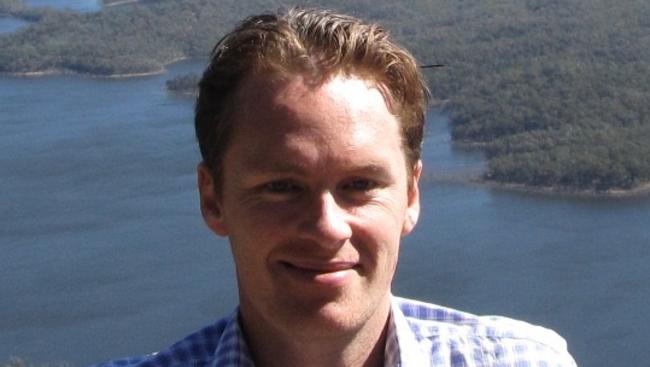
IT’S one of the longest running inquests in New South Wales history.
And yesterday the Lindt Cafe siege inquest finally heard from its last witness as the public hearings drew to a close.
It’s taken 16 months, 109 sittings days, 119 witness testimonies, and hours of cross-examination and legal argument to reach this point.
The inquest has heard evidence from siege survivors, the state’s top cops Andrew Scipione and Catherine Burn, police commanders, snipers, negotiators, tactical operations officers, ballistics and forensics specialists, terrorist experts, psychiatrists, psychologists, a UK review panel and many more.
The purpose of the inquest is to examine the police response to Australia’s “first terrorist hostage incident” and determine how it could be handled differently should it happen again.
It was just under two years ago that gunman Man Haron Monis walked into the Lindt Cafe in Sydney’s Martin Place and took eight employees and 10 customers hostage.
He was armed with a sawn-off shotgun, wearing a backpack sprouting wires and proclaimed allegiance to Islamic State.
The ordeal lasted 17 hours. It ended with two innocent people — cafe manager Tori Johnson and barrister Katrina Dawson — dead.
It was the final moments of the siege, on December 16, 2014, where it all went tragically wrong.
At 2.03am, Monis fired a shot in the direction of six hostages as they escaped. Moments later, a sniper saw hostage Tori Johnson ordered to his knees. He reported hostages lives were in danger and that he feared the cafe manager was about to be executed. Heavily armed police positioned outside the cafe stayed put. Another few minutes passed until, at 2.09am, Monis fired a second shot that failed to hit anyone. Mr Johnson was still on his knees. The risk level had “skyrocketed” and the hostages inside knew it. Still, there was no movement from police. Tears fell from Mr Johnson’s eyes. He had been on his knees for seven minutes when Monis pulled the trigger and executed him at 2.13am.
An “emergency action plan” (EA) was activated and Tactical Operations Unit officers were ordered inside, still of the false belief that the gunman had a bomb. Fearing for their own lives they bravely burst into the cafe. Monis fired the first shot in the bloody exchange. Police returned fire and shot him dead. The inquest heard Monis’ head was “blown off” by the bullets.
Mother of three Katrina Dawson, 38, was hit by fragments of a police bullet in the crossfire and later died. Several other hostages were also hit by bullet fragments but survived.
A “deliberate action plan” (DA) would have allowed police to surprise the gunman and launch an assault on the stronghold at a time of their choosing. Unlike an EA, it does not require “death or serious injury” to be triggered. But the inquest heard a DA had not been approved by police commander Mark Jenkins, who was in charge during the final hours of the siege. Police Commissioner Andrew Scipione and his deputy Catherine Burn were the only other two authorities with the power to approve a DA but both told the inquest it was not their decision to make at the time.
Should police have acted sooner and stormed the cafe before any hostages were killed? The inquest has heard there was ample opportunity to do so but that a litany of police miscommunications and oversights prevented them from doing so.
NSW Coroner Michael Barnes is expected to hand down the findings some time next year.
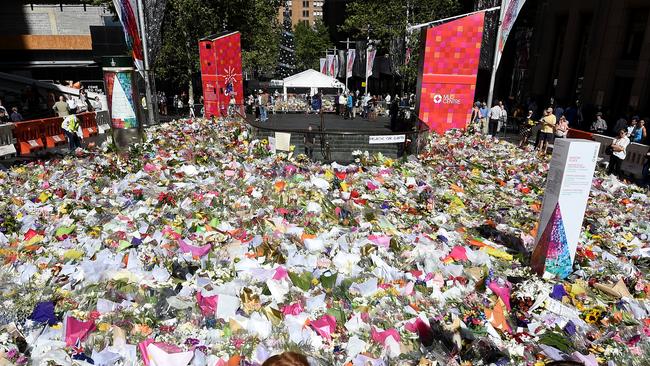
Here’s what we know so far:
NEGOTIATORS WERE ILL-EQUIPPED
The state’s only negotiation truck that was equipped with everything police negotiators needed to operate, was unavailable during the siege.
The inquest heard it was never replaced after it fell into disrepair in 2011.
As a result, police negotiators had to cram into an office at the NSW leagues club where they had access to just one phone line during the Lindt Cafe siege. The room had no whiteboards and no live feed of the siege. The primary negotiator had never handled a hostage situation before. His boss worked for more than 30 hours straight and was simultaneously overseeing other high-risk incidents across NSW.
DESPERATE CALLS FROM HOSTAGES TO POLICE WENT UNANSWERED
Desperate calls from hostages to negotiators went unanswered in the final hours of the siege because police didn’t have access to adequate resources including multiple phone lines, the inquest heard.
Several of the hostages told the inquest they had called negotiators on the number provided to them but had been unable to reach police during the crisis.
Negotiation team leader “Reg” was quizzed on the stand over whether or not failing to receive the calls might have been a lost opportunity to diffuse Monis and bargain for the release of hostages. He agreed things could have been done better, in hindsight.

MISSED CHANCES TO BARGAIN WITH THE GUNMAN
Police negotiators never made direct contact with Monis. All communications were done through a third party — the hostages.
There were several missed opportunities to negotiate the release of hostages throughout the day, the inquest heard.
And key demands by Monis — including securing media coverage, organising a meeting with the prime minister and being given an Islamic State flag — were delayed in reaching top commanders.
Monis had tasked hostage Selina Win Pe to call triple-0 and relay his demand for the lights outside the cafe in Martin Place to be turned off.
Ms Win Pe made the first call at 8.38pm and told police that hostages would be hurt if the demand wasn’t met.
Mr Jenkins said he wasn’t aware of the request until 45 minutes before the gunman killed Mr Johnson.
The lights were never turned off despite Ausgrid staffers on standby to carry out the task.
Mr Jenkins said he didn’t know the Ausgrid team had been made available to take orders from police.
Counsel assisting the inquest Jason Downing suggested that turning off the lights would have benefited everyone because it would have been more difficult for the gunman to see the hostages.
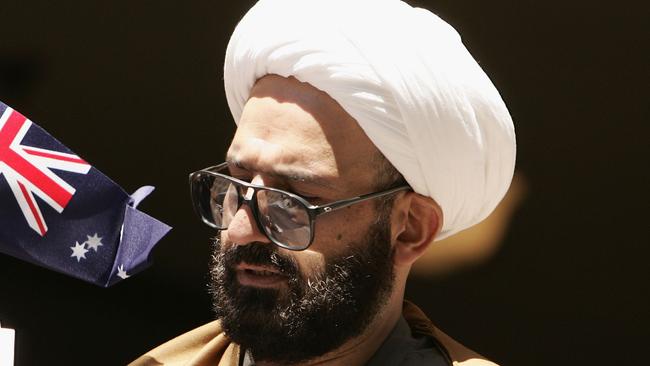
SLAIN HOSTAGE’S WARNING OVERLOOKED
The inquest also heard that Mr Jenkins did not know Mr Johnson had earlier sent text messages about the gunman’s worsening behaviour to family members who immediately passed them onto police.
Barrister Michael O’Connell SC, counsel for Ms Dawson’s family, said Mr Johnson sent a text message to a family member at 1.43am, exactly 30 minutes before he was killed.
“At 1.43am, a text message was sent by Mr Johnson to his loved ones which was conveyed to police at 1.53am,” Mr O’Connell said.
Mr Johnson’s message read: “He’s (Monis) increasingly agitated, walks around when he hears a noise outside with a hostage in front of him. Wants to release one person in good faith, tell police.”
Mr Jenkins said he “ wasn’t aware of that text message”.
“I was aware of a call to the (police) media unit that Monis was looking to release one hostage,” he said.
Mr Johnson had sent another message to family earlier in the night, at 10pm.
It read: “I love you all, I’m still alive, very scared.”
Mr Jenkins revealed he was in the dark about various pieces of crucial information during his command, including that he didn’t even have access to live footage during the siege despite most of Australia being able to view it from home.
He also revealed he didn’t have access to police logs and didn’t know the gunman fired a second gunshot before killing Mr Johnson until a few months ago, about 1.5 years after the siege.
FAILURE TO ACTIVATE AN ‘EMERGENCY RESPONSE’
Counsel for Tori Johnson’s family, Gabrielle Bashir, SC argued that police should have acted after Monis fired his first shots — and missed — at escaping hostages, just 10 minutes before he executed Mr Johnson.
Ms Bashir said the shots should have triggered an emergency response because it indicated the hostages were in imminent danger of serious injury or death.
She said Mr Jenkins “should have told the forward commander to immediately initiate the EA” when a shot was “fired inside the stronghold in the direction in which the hostages were running to make good their escape”.
“No I don’t agree with that,” Mr Jenkins said.
Mr Jenkins said police wanted to “understand as well as we could ... what that shot was about” before responding to it.
Ms Bashir: “Any shots fired within the stronghold risked serious injuries of hostages within the stronghold.”
Mr Jenkins: “Well shots that didn’t hit anyone don’t cause injuries so I’m not sure what your question is focused at there ... Certainly there would have been a desolation of the risk. There’s no doubt about that.”
Ms Bashir said the “danger factor for the remaining hostages ... skyrocketed” after the six hostages escaped and it was “no longer a controlled environment”.”
“Monis had given plenty of warning that hostages would die if there were further escapes, hadn’t he?” Ms Bashir asked.
Mr Jenkins: “He had.”
SNIPER’S WARNING WENT UNHEARD
Monis fired the first shot at 2.03am as six hostages escaped, shattering the glass above their heads. One of the three snipers positioned in the Westpac building was alarmed when, just three minutes later, he saw Mr Johnson move to his knees and place his hands above his head. The sniper called over the police radio and warned that an execution looked imminent. No one responded. Mr Jenkins told the inquest he didn’t hear the call and wasn’t aware of it. The gunman was out of view so the sniper couldn’t shoot.
FAULTY POLICE RADIOS
Problems with the radio system prevented police from receiving reports that Monis had fired a second shot at 2.09am, the former officer confirmed.
The forward command post never received word that Mr Johnson had been seen on his knees at 2.06am because of the radio issues. The sniper saw Mr Johnson fall forward at 2.13am.
As police made the critical call to storm the Lindt cafe after Monis executed Mr Johnson, their radios failed.
As soon as snipers reported Mr Johnson had been shot dead, with the words “hostage down” ringing out over the airwaves, the commander of the crack Tactical Operations Unit attempted to activate the emergency action trigger required for his men to enter the building.
“Echo Alpha this is Tango Charlie — commit the EA,” he broadcast over the police radio network.
There was no movement at the front line nor confirmation over the airwaves.
As he tried to broadcast the message again seconds later, his deputy, who was standing beside him at the forward command post, intervened.
“I stopped him and said, ‘No, let me’ in case his radio wasn’t working a second time ... I took the initiative to make the call,” the former senior Tactical Operations Unit member told the inquest.
“All teams commit the EA,” he broadcast, before repeating the code word three times.
Heavily armed officers then stormed the cafe, shooting Monis dead more than 17 hours after the siege began.
Alpha 2’s radio had “shit itself” at the start of the siege, more than 14 hours before, and there were no spares, he said. As a result, he was unable to relay the identification of Monis when police eventually stormed the cafe. He instead relied on “buddy comms” — relayed messages — with his colleague Officer A, who was directly behind him during the storming of the cafe.
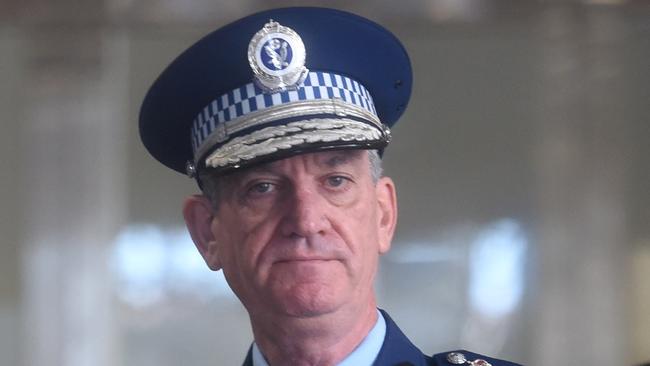
POLICE COMMISSIONER ACCUSED OF ‘INTERFERING’
A phone call between Mr Jenkins and Mr Scipione at 10.57pm on December 15, some three hours before the siege reached its deadly conclusion, emerged at the inquest as one of the most critical areas in trying to determine whether or not the police commissioner inappropriately interfered in the siege.
A scribe alongside Mr Jenkins on the night recorded of their conversation: “DA to occur as last resort — COP (Commissioner of Police)”.
The letters DA referred to a deliberate action, which was produced but never approved during the siege. The plan would have seen police storm the cafe at a time of their choosing.
Mr Scipione said he called to check on Mr Jenkins’ welfare soon after the commander took charge, insisting the commander broached the DA topic during their brief conversation.
When Mr Jenkins earlier fronted the inquest, he originally said they were Mr Scipione’s words, before later telling the coroner they were instead his own.
“I can assure you I know I would not be asking or telling Jenkins or any other commander that a DA was a last resort, simply because that’s not my responsibility, that’s not my role,” Mr Scipione said.
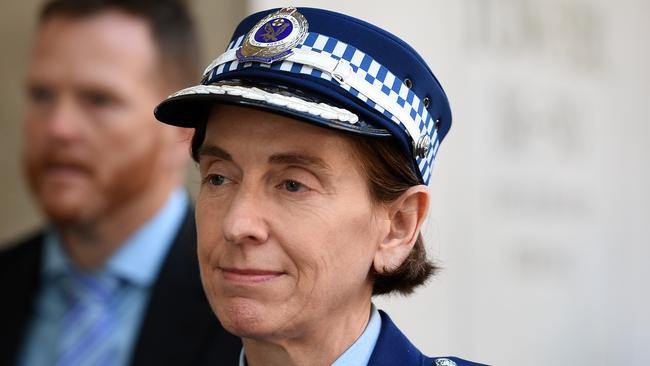
DEPUTY POLICE COMMISSIONER DELETED EVIDENCE
A telecommunications provider was directed to track down deleted text messages Ms Burn sent during and soon after the deadly Martin Place stand-off but the inquest this week heard the search had “not yet yielded fruit”.
Ms Burn told the inquest she deleted texts received during the siege because she was told she wasn’t an “involved officer.”
She also insisted she “did not need to know the detail” of the siege.
“That was not my job,” she told NSW Coroner Michael Barnes.
Ms Burn’s testimony took a surprising turn on Tuesday when one of the missing messages sent to her from Mr Scipione was located.
Ms Burn had emailed the text message to herself at 10.37pm on the night of the siege but not initially provided it as evidence.
Ms Burn told the inquest she was “shocked” and had “forgot(ten)” about having received the message in the first place.
In the message, Mr Scipione said the force needed to buy better hi-tech equipment, indicating that despite earlier denials, he was aware police were ill-equipped during the siege response.
Mr Scipione told the inquest the message pertained to equipment borrowed from other agencies, which had no operational impact.




